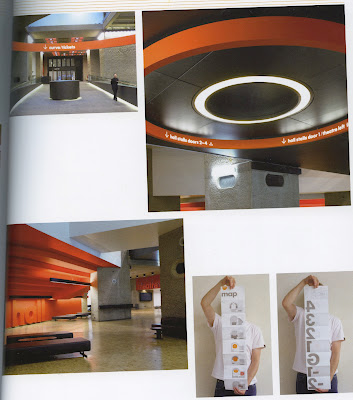
Using these silhouettes is a pretty effective way of showing the design in context and to what scale.
This design is documenting the shape of the moon throughout the year 2000. Again, I like the way this becomes like an obsessive documentation process, and the detail makes it seem like a really authentic piece of design.
The same can be said for this, which details loads of different chairs. There's a real sense of collection which is quite revealing/intrusive.
This is something that I saw and thought might be a useful method for my information leaflet to separate information per zone. Now that I look back on it though I actually don't think it's very engaging. That could be purely down to colour choice.





















































